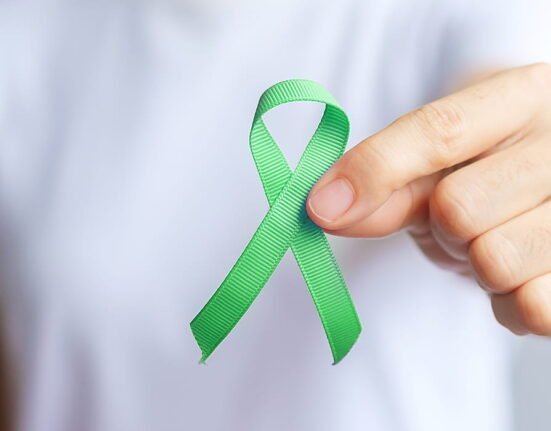When the major girl group sensation Katseye performs on stage and the internet falls into another debate on whether the concept is “too mature” for the group members, the issue isn’t the performance itself, but rather how said performance is viewed by the audience. Whether it be a K-pop boy group or a teenage American singer, pop culture across the globe is constantly put into question about incidents involving portrayals of minors in acting, music or otherwise. These cater to a variety of people across ages, genders and other social backgrounds. And this is what begs to question: how many of these portrayals are just to capture the art or innocence, and not actually intended or made to be suitable for adult consumption?
Read More: The Obsession of K-pop Culture in India and Its Psychological Impacts
What is the Adult Gaze?
The term is an adapted version of feminist theorist Laura Mulvey’s ‘male gaze’ theory. In her book, she states, “In a world ordered by sexual imbalance, pleasure in looking has been split between active/male and passive/female. The determining male gaze projects its phantasy onto the female form, which is styled accordingly. In their traditional exhibitionist role, women are simultaneously looked at and displayed, with their appearance coded for strong visual and erotic impact so that they can be said to connote to-be-looked-at-ness.” (Visual and Other Pleasures, 1989).
The same view is applied to the understanding of adult gaze, where the adult acts as an active observer or subject who “looks at” the child while the “child” is being “looked at” as a passive object of observation rather than a living individual with their own thoughts and agency. It also emphasises how adults project onto children their fears, desires, expectations, etc.
Read More: Understanding Sexual Desires in Teenagers
How Pop Culture Promotes Normalisation
1. Desensitisation
“An active attempt to change an attitude primarily by altering the emotions, feelings, or mood states associated with the attitude object” (APA, 2018). The continuous exposure to certain representations of children, such as hypersexualised behaviour, can result in lowered sensitivity towards boundary violations and other unethical actions.
2. Parasocialism
“Parasocial relationships (PSRs) are nonreciprocal socio-emotional connections with media figures such as celebrities or influencers.” (Hoffner & Bond, 2022). When a 14-year-old becomes a K-pop idol and is made to perform for the adult gaze, the consumers form emotional connections and often project their fantasies onto them.
Read More: Investigating the Psychology of ‘Fangirl’ Culture and Female Attachment to Fictional Characters
3. Conditioning
The repeated portrayals of children in media further condition people to it being the standard or the norm. When every adolescent girl in movies is portrayed as “too wise for her age,” audiences often interpret that maturity as sexual appeal.
How it Affects Children
- Self-objectification: Children begin to view themselves through the lens of others, as the object of observation, as someone “to be objectified”. They start to prioritise validation and expectation from others rather than focusing on their own internal abilities and skills.
- Behavioural change: This works in tune with Bourdieu’s concept of habitus, which is “a subjective but not individual system of internalised structures, schemes of perception, conception, and action common to all members of the same group or class” (Bourdieu, 1984). When children are encouraged to behave in a certain way and, in fact, are rewarded for it, they internalise these behaviours, which is further reflected in their normal lifestyle.
- Reinforcement of gendered stereotypes: “The hypersexualised representations prevalent in media and advertising create a distorted view of gender, where femininity is closely associated with sexual attractiveness, and masculinity with dominance and control.” (Amazigh, 2025) These distorted views further reinforce existing views on gender roles and the stereotypes attached to them.
- Unrealistic expectations and esteem issues: Children’s physiques are obviously different from adults. However, the constant effort to fit them into adult roles in terms of appearances and behaviour often gives rise to unrealistic expectations and disappointments of not being able to achieve them, further giving rise to lower self-esteem.
- Development: According to the fifth of Erikson’s eight stage of psychosocial development, also known as identity versus role confusion, an individual’s life is marked by an identity crisis that occurs during adolescence. “During this stage, the individual may experience a psychosocial moratorium, a period of time that permits experimentation with social roles.”(APA, 2023).
Here, individuals try to establish their own values and ideals. However, the adult gaze hinders this by skewing children’s views on their own identity, affecting their development.
Read More: Freud’s Stages of Psychosexual Development
Challenging the Adult Gaze
1. Media Literacy
Media literacy is the “ability to access, analyse, evaluate, and communicate messages” (Aufderheide, 1993). Young people should be taught to question and think critically, rather than passively accept what they are told. This would help in fostering critical thinking, media literacy skills and building resilience as well as fighting existing ideas and limiting impositions of the adult gaze (Amazigh, 2025).
2. Encouraging Health and Body Positivity
Through social learning, children internalise parents’ and caregivers’ attitudes. If these significant others try to establish healthy talk, and have discussions about their own pressures, insecurities and how they get over them, celebrate all body shapes and types, these children learn to develop healthy images of their own body (Amazigh, 2025).
3. Ethical Considerations of Media
Modern media and pop culture portrayals of young individuals strongly shape how they are perceived. It is the responsibility of media creators and managers to ensure that portrayals of young individuals are ethical and free from harm.
4. Community-Based Efforts and Culture Change
Development of programs that emphasise prevention with a focus on incorporating findings from clinical and developmental psychology, ensuring a promotion of healthier representations of childhood and children, as well as making actual efforts in reducing the prevalence of hypersexualised content, should be prioritised in the community. “Addressing the challenges posed by hypersexualisation requires a multifaceted approach that combines rigorous research with proactive community and cultural interventions.” (Amazigh, 2025).
5. Systemic Change
Beyond public actions, the respective authorities and state bodies also have an important role to play. There should be advocacy for stricter regulation of portrayals of as well as intended for children. Schools should actively include media literacy and similar education as a part of their curriculum (Amazigh, 2025).
Conclusion
Pop culture, for decades, has been riddled with harmful portrayals of children and adolescents in its content, intended more for adult consumption than children themselves. The adult gaze, a variation of the male gaze, objectifies children by projecting adult anxieties and desires onto them. Continuous exposure, parasocial relationships, and conditioning often normalise these portrayals.
This is detrimental to children as they are easily impressionable due to their young age and can start self-objectification, have unrealistic expectations and self-esteem issues, hindering development, changes in behaviour and reinforcing harmful gender stereotypes. Intervention methods such as media literacy, ethical considerations in media, systemic efforts, encouraging health and body positivity, community-based efforts and culture change can help challenge this normalisation.
As members of society, every grown-up owes it to children, who are the future, to make sure that they are ethically represented, without judgment, desires or other impositions of adults’ expectations onto them.
FAQs
1. What is the adult gaze?
The adult gaze, an extension of the male gaze, objectifies children by projecting adult anxieties and desires onto them.
2. How does pop culture normalise the adult gaze on children?
The adult gaze is often normalised by continuous exposure, parasocial relationships, and conditioning to hypersexualised and other unrelated portrayals of children.
3. What are some intervention methods to stop this normalisation?
Media literacy, ethical considerations in media, systemic efforts, encouraging health and body positivity, and community-based efforts. And culture change can be marked by intervention methods for this.
References +
Amazigh, M. (2025). The normalisation of hypersexualisation in childhood: A clinical and social psychological analysis of media influences and developmental impact. Journal of Family Research, 5(1), 32–70. University of Algiers – Family Law Laboratory. EISSN 2773-4463.
Monforte, S. (2020, June 12). The sexualisation of children in contemporary media. Medium. https://medium.com/@stella.monforte/the-sexualisation-of-children-in-contemp orary-media-d6b9aac9d822
Wendt, R., Naderer, B., Bachl, M., & Rieger, D. (2023). Social media literacy among adolescents and young adults: Results from a cross-country validation study. Social Media + Society, 9(4), Article 20563051231216965. https://doi.org/10.1177/20563051231216965
Perkins, J. F. (2024). The adult gaze. Raising Feminist People. https://jameyfisherperkins.substack.com/p/the-adult-gaze
Desensitisation. (n.d.). In ScienceDirect Topics: Psychology. Elsevier. https://www.sciencedirect.com/topics/psychology/desensitization













Leave feedback about this